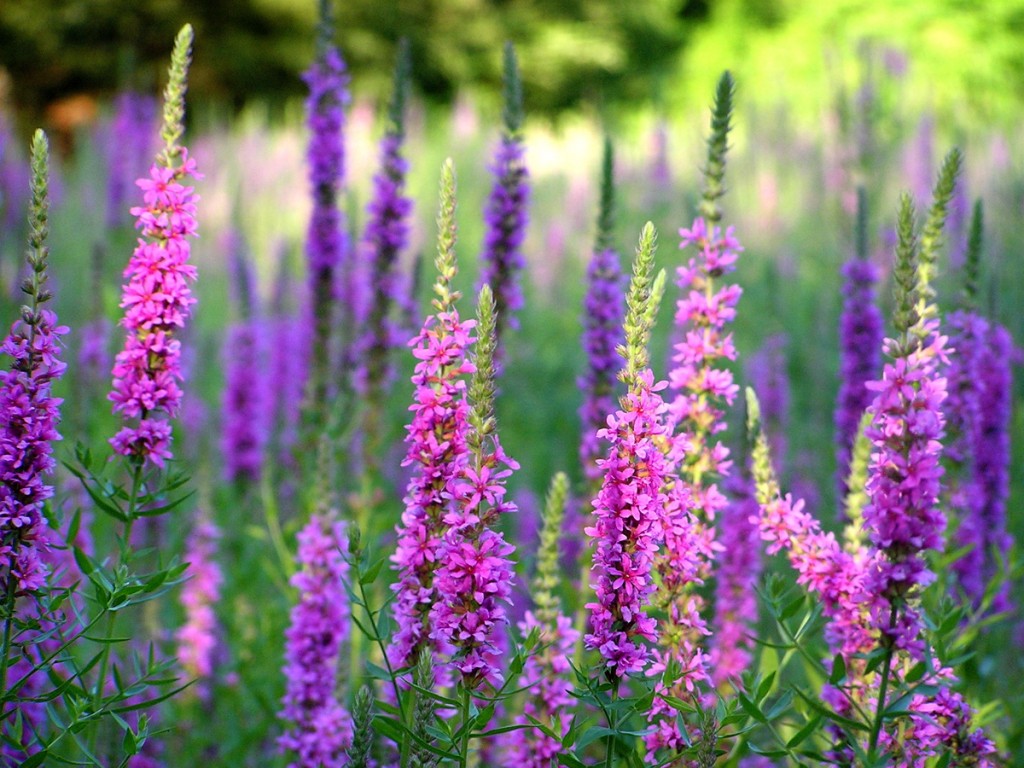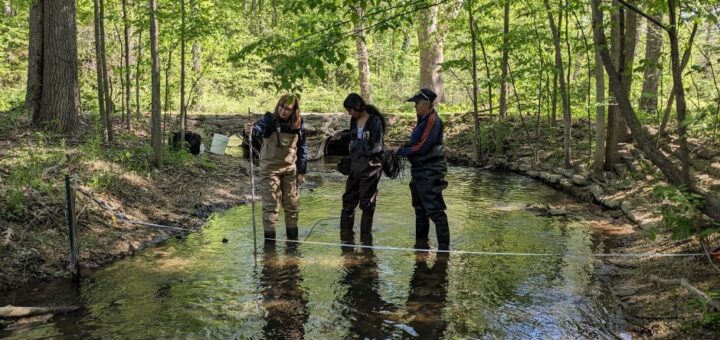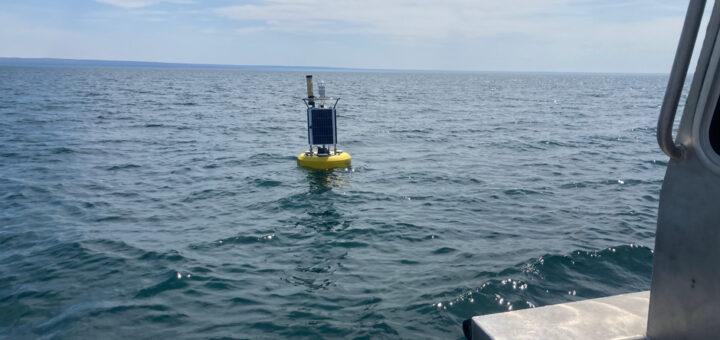Purple Loosestrife
Daniel Kelly | Fondriest Environmental
Purple Loosestrife first made landfall on North America’s eastern seaboard beginning in the 1800s. From there it spread by pollination, commonly using roads, ditches or canals to find habitat in new regions. Since that time, the prolific invasive species has taken up holds in every U.S. state except Florida, according to the U.S. Geological Survey. It is easily found on the shorelines of the Great Lakes and many other freshwater bodies in North America.
Invasive Purple Loosestrife is damaging because of its ability to work its way into lakes, rivers and wetlands and take over large areas. As it makes its advances, it edges out other plants and the animals that depend on them, leading to negative biodiversity impacts for native wildlife and flora.
Purple Loosestrife most commonly flowers and spreads during the summer months. Once it has planted itself, the plant develops a tap root that remains while its stems form and go away annually. The stems can reach 9-feet tall and more than 5 feet in width.
The plant is well known with horticulturists who admire it for its beauty. Their appreciation, as well as its use as an astringent in medicines, dates back centuries. Purple Loosestrife has been an ingredient in medicines used to treat dysentery, external bleeding, as well as ulcers.
It is quite easy to find Purple Loosestrife plants along shorelines in the Great Lakes region. The flowering plant is living successfully in virtually all U.S. states and Canada.

Distribution of Purple Loosestrife in the continental United States and Canada. (Credit: Natural Resources Conservation Service, U.S. Department of Agriculture)
Prevent Its Spread
Herbicides have been employed successfully to keep Purple Loosestrife in check, but the treatment method is expensive and requires years of effort to manage surviving plants and their seedlings. Flooding is another control method used against the plant. The option can be used successfully, but maintaining constant water levels is difficult and native plants often suffer alongside Purple Loosestrife. Beetles that feed on the plant have also been used as a means to mitigate its spread. The biggest benefit of this biological method is the insects’ ability to virtually destroy Purple Loosestrife’s seed production capabilities.
Sources:
- http://nas.er.usgs.gov/queries/greatlakes/FactSheet.aspx?SpeciesID=239&Potential=N&Type=1&HUCNumber=DGreatLakes
- http://www.dnr.state.mn.us/invasives/aquaticplants/purpleloosestrife/index.html
- https://www.invasivespeciesinfo.gov/aquatic/plants/purple-loosestrife
- https://dnr.maryland.gov/wildlife/Pages/plants_wildlife/Invasives/inv_PurpleLoosestrife.aspx
- http://plants.usda.gov/core/profile?symbol=lysa2
- http://www.ecy.wa.gov/programs/wq/plants/weeds/aqua009.html










